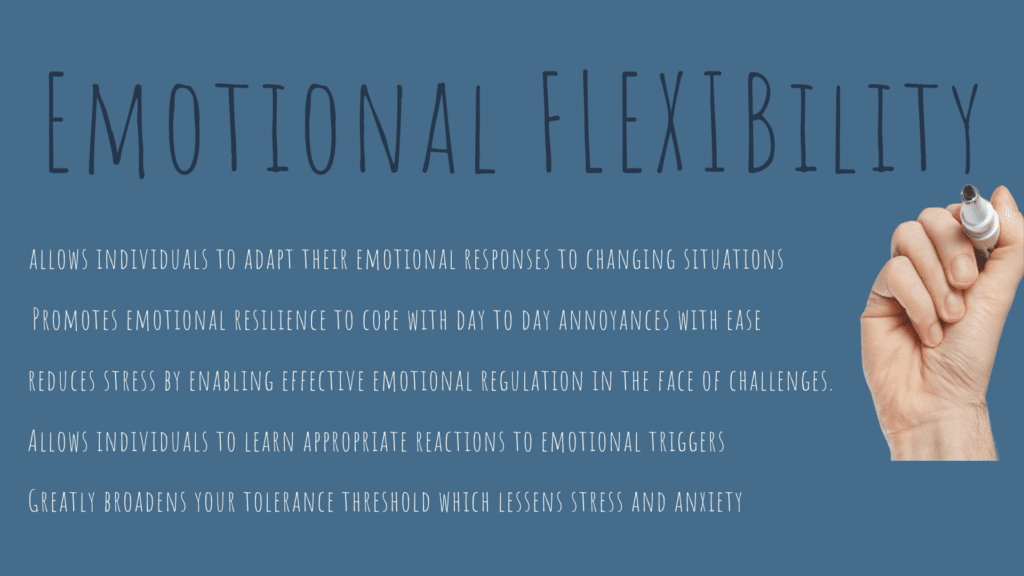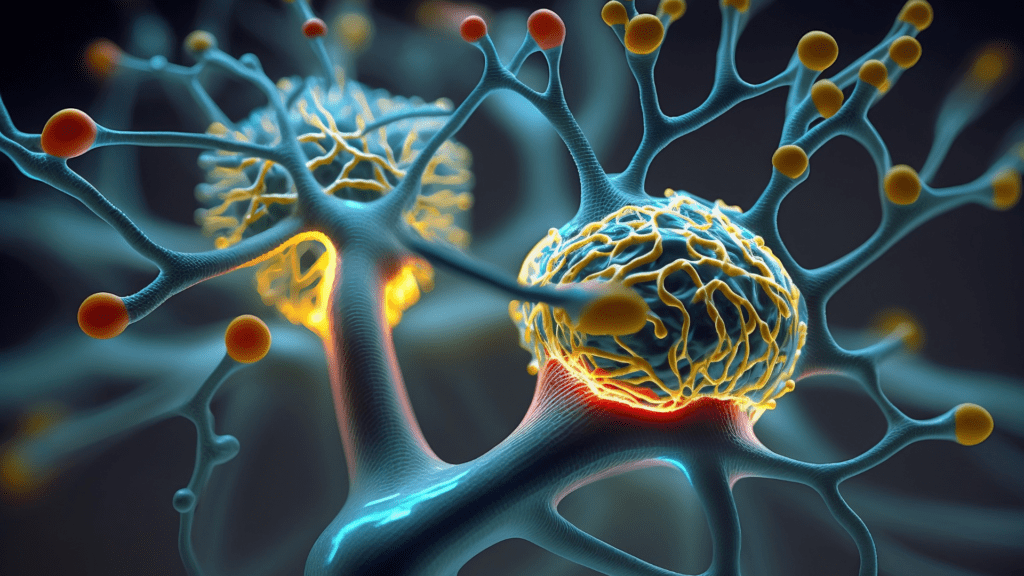What Is the Threshold of Tolerance?
The threshold of tolerance—also known as the window of tolerance—is a mental and emotional state in which individuals can function effectively under stress. Staying within this threshold means maintaining control of your emotions—the ability to manage emotional responses without becoming overwhelmed. When outside the threshold, individuals experience either hyperarousal (feeling too activated) or hypoarousal (feeling emotionally numb)
Developing emotional regulation helps us stay within the window, enabling us to engage meaningfully with others and respond effectively to life’s challenges without succumbing to emotional distress or exhaustion.
Why Having Emotional Control Matters
The threshold of tolerance dictates how we process emotions during difficult situations. Those with a wider threshold can manage emotions effectively, while those with a narrower window struggle with stress, leading to emotional exhaustion, burnout, and mental health issues like anxiety and depression. Expanding this threshold improves resilience and enhances emotional well-being.
Being emotionally regulated also supports better decision-making and healthier relationships. It allows individuals to respond to stress with clarity and maintain stable interpersonal interactions, which is crucial in both personal and professional contexts.

but can be addressed through neuroscience-based techniques.
Trauma’s Role in Shaping the Threshold
Experiences of trauma, whether acute (a one-time event) or chronic (repeated exposure), profoundly narrow the threshold of tolerance, making it more difficult for individuals to remain emotionally regulated. Individuals with trauma histories often exhibit what is low frustration tolerance, becoming easily overwhelmed by stressors that others may navigate with ease. Trauma is deeply embedded in the nervous system, heightening the likelihood of triggering fight, flight, freeze, or fawn responses, even in situations that do not pose an immediate threat.
Trauma disrupts the brain-body connection by altering the autonomic nervous system (ANS). This system, which regulates involuntary bodily functions like heart rate and breathing, becomes hypersensitive following traumatic experiences. As a result, individuals are often stuck in a state of hyperarousal (anxiety, panic, agitation) or hypoarousal (emotional numbness, dissociation), making it extremely difficult to process emotions in real time (Welldoing, Verywell Mind).
Trauma and the Brain:
Trauma significantly alters how the amygdala, hippocampus, and prefrontal cortex interact.
- The amygdala, responsible for detecting threats, becomes overactive, resulting in exaggerated responses to stress.
- The hippocampus, which helps differentiate between past and present, becomes impaired, leading individuals to experience memories or triggers as if they were happening in the present.
- The prefrontal cortex, responsible for decision-making and regulation of emotion, becomes under-active, diminishing the ability to respond rationally to stress (Welldoing, 2024).
This neurobiological imbalance leaves individuals vulnerable to emotional dysregulation, as their brain continues to react to triggers as if the original trauma is still occurring.
Chronic Trauma and Emotional Patterns:
Chronic trauma has a cumulative effect, reinforcing negative emotional patterns over time. When individuals are repeatedly exposed to traumatic situations, they tend to develop rigid, maladaptive responses such as avoidance, hyper-vigilance, or withdrawal. These responses serve as protective mechanisms but ultimately shrink the threshold of tolerance, making emotional regulation difficult even in everyday interactions. Over time, individuals may become emotionally exhausted, heightening the risk of burnout, anxiety disorders, and depression.
How Triggers Affect the Threshold:
Triggers are sensory reminders of past trauma—such as sounds, smells, or situations—that cause individuals to relive traumatic experiences involuntarily. The brain, unable to distinguish between past and present, activates the fight-flight-freeze-fawn response. These reactions reinforce emotional dysregulation, making it harder for the person to regain control over their emotions.

How Emotional Flexibility Reduces Trauma Responses
- Breaking Rigid Emotional Patterns
Trauma often causes individuals to develop rigid emotional patterns, such as chronic fear, avoidance, or hypervigilance. Emotional flexibility helps them shift out of these reactive states, enabling them to respond more thoughtfully to triggers instead of defaulting to fight-or-flight behavior. - Activating Adaptive Coping Mechanisms
Neuroscience shows that the prefrontal cortex, which governs decision-making and emotional regulation, becomes impaired during trauma responses. Developing emotional flexibility strengthens the brain’s capacity for adaptive responses, allowing individuals to use healthier coping strategies even in stressful situations (Positive Psychology, 2024). - Rewiring Neural Pathways through Neuroplasticity
With repeated practice in emotional flexibility, the brain forms new neural connections through neuroplasticity. This process gradually replaces the trauma-related neural patterns associated with heightened stress responses, such as panic or dissociation, with more adaptive pathways (Verywell Mind). - Reducing Hyperarousal and Emotional Numbness
When trauma pushes individuals beyond their threshold of tolerance, they often experience hyperarousal (anxiety, irritability) or hypoarousal (emotional detachment, numbness). Emotional flexibility helps them stay within their emotional capacity, reducing extreme reactions by teaching them to adjust their emotional states mindfully and calmly.
The Role of Emotional Flexibility in Post-Traumatic Growth
Research shows that emotional flexibility promotes post-traumatic growth by helping individuals find meaning in difficult experiences. By learning to navigate various emotional states without judgment, they become more resilient, which allows them to process trauma rather than becoming overwhelmed by it.
To cultivate emotional flexibility, neuroscience based approaches have proven to be the most effective in quieting the regions of he brain tha is cultivated through practices that actually target the brain regions associated with .
In summary, emotional flexibility helps individuals replace rigid trauma responses with adaptive behaviors, rewiring the brain for healthier emotional regulation. This skill enables them to process emotions effectively, reducing the intensity and frequency of trauma responses over time.
Neuroscience: Rewiring Emotional Responses for Lasting Change
Neuroplasticity—the brain’s remarkable ability to reorganize itself by forming new neural pathways—plays a critical role in expanding the threshold of tolerance. Neuroscience-based practices help expand tolerance, allowing individuals to remain emotionally regulated under stress. This adaptability allows individuals to change long-standing patterns of emotional reactivity, making healthier emotional responses more accessible over time. Neuroscience-based life coaching offers clients access to this resource—a tailored, evidence-based approach to emotional regulation—helping them build resilience and manage stress effectively

neural pathways, helping to expand the threshold of tolerance.
How Neuroplasticity Works in Emotional Regulation
Neuroplasticity occurs through the strengthening or weakening of neural connections based on repeated behavior. The principle of “use it or lose it” governs this process: neural pathways that are frequently activated become stronger, while those that are neglected fade away. Neuroscience-based life coaching leverages this capacity to replace maladaptive emotional responses with healthier behaviors, promoting sustainable change (Positive Psychology, 2024).
When individuals consistently practice self-regulation techniques, such as mindfulness, journaling, or cognitive reframing, they activate the prefrontal cortex—the brain’s rational center responsible for decision-making and emotional regulation. Over time, these new pathways override the amygdala’s hyperactive responses, helping the individual manage stress without slipping into fight, flight, freeze, or fawn modes.
Through these methods, the brain becomes more capable of handling stress and emotional challenges without becoming overwhelmed. This process not only expands the threshold of tolerance but fosters lasting transformation.
The Fight, Flight, Freeze, and Fawn Responses
When the brain perceives a threat, it triggers one of four survival responses:
- Fight – Reacting aggressively or defensively.
- Flight – Avoiding confrontation or fleeing stressful situations.
- Freeze – Becoming paralyzed and unable to act.
- Fawn – Submissively complying to avoid conflict.
These automatic responses are deeply rooted in the nervous system. While they may protect us in life-threatening situations, they can hinder us from emotionally regulating when overused.
Strategies to Expand Emotional Regulation Capacity
Building emotional regulation skills requires intentional effort and consistent practice. Below are evidence-based strategies to widen the threshold of tolerance.
1. Mindfulness Practices
Engaging in mindful breathing and meditation helps ground individuals in the present moment, preventing overactivation of the nervous system.
2. Cognitive Restructuring
Replacing negative thoughts with healthier ones through cognitive-behavioral therapy (CBT) trains the brain to respond more calmly to stressors.
3. Physical Activity
Exercise boosts dopamine and serotonin, chemicals that improve mood and enhance emotional regulation.
4. Therapeutic Support
Working with professionals skilled in trauma-informed practices—such as neuroscience-based life coaching—can heal emotional wounds and expand one’s emotional threshold.
5. Healthy Social Connections
Support networks provide co-regulation, allowing individuals to remain emotionally stable when facing stress.

Practical Applications of Emotional Regulation
Expanding the threshold of tolerance transforms how individuals experience daily challenges. Emotionally regulated people can recover more quickly from setbacks, maintain mental clarity, and navigate interpersonal relationships with greater empathy and effectiveness. They also develop emotional resilience, enabling them to thrive even during times of uncertainty. In my own practice, I teach my client’s distress tolerance techniques, such as deep breathing and grounding exercises, which helps them stay regulated in stressful situations and prevent emotional overwhelm.
What is Distress Tolerance for Emotional Regulation?
Distress tolerance refers to the ability to withstand and manage emotional pain or discomfort without engaging in impulsive behaviors. It is a crucial skill for maintaining emotional regulation in challenging situations. When individuals face overwhelming stress, distress tolerance techniques—such as deep breathing, grounding exercises, or self-soothing strategies—help them navigate through the discomfort without resorting to harmful coping mechanisms. These techniques prevent emotional overload and support long-term resilience by helping individuals stay within their window of tolerance during distressing moments.
Neuroscience shows that practicing distress tolerance techniques regularly strengthens the brain’s ability to regulate emotions, activating the prefrontal cortex to manage stress responses effectively. This skill is especially important in reducing emotional reactivity and promoting emotional flexibility, allowing individuals to recover more quickly from emotional triggers.
Final Thoughts: Creating Lasting Change through Neuroplasticity
The good news is that emotional regulation skills can be developed and strengthened throughout life. Through consistent practice and the brain’s capacity for neuroplasticity, individuals can rewire emotional responses and expand their threshold of tolerance. Whether it’s addressing trauma or managing everyday stress, building these skills ensures long-term mental well-being and personal growth.




